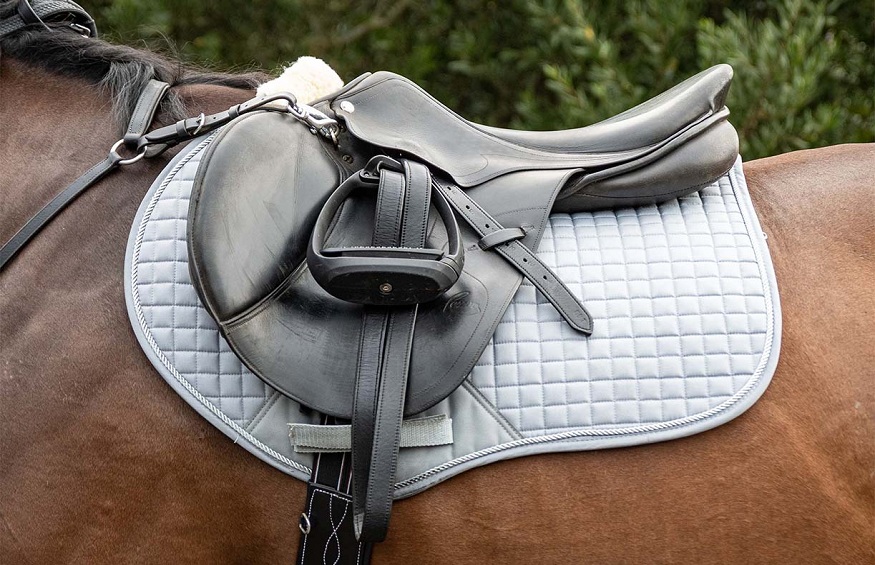Fitting a saddle or horse numnah on your horse can be challenging, especially for new owners. But it doesn’t have to be. You’ll find it pretty much easier if you know how to do it. Thankfully, in this blog, we got you covered.
We discuss a step-by-step guide to fit a saddle on your horse. Let’s get started.
Place the saddle on the animal and wrap it with the recommended girth straps. Make sure that the saddle is two fingers behind the shoulder/scapular. If your horse has a stable rug, you can remove it first before you place the saddle.
Place a rolling object on the saddle seat; it will roll to the lowest point to determine whether the saddle is balanced and level. It may be too wide if it runs to the front of the saddle and too narrow if it runs to the back of the seat. Riding in a fresh saddle may cause balance issues as the saddle breaks in.
Verify wither clearance. This can range from two to four fingers, although it decreases significantly once the saddle is ridden.
Slide your hand down the front of the panel. This should be simple to do; however, if it feels tight, you may need a different treewidth or have placed the saddle too far forward in relation to the scapula or shoulder blade. The panel may feel a bit tight lower down close to the end of the tree points, which are positioned under the point pockets, or it may be excessively wide, causing all the weight to be centered at the top edge of the saddle on each side of the withers.
Examine the saddle for bridging. If there is a significant gap between the horse’s back and the center of the panel, the horse may require a different tree or panel design, a smaller seat size, additional flocking in the saddle’s center, or a larger saddle. Before you check for bridging, the girth must be tightly done up.
Put your hands on the pommel and cantle to feel any excessive movement from rear to front as you look for signs of pivoting. If there is too much movement, you might require a flatter tree, a panel with a less curved shape, a saddle that is too broad in the front, or flock balance.
You will have received instructions on which girth straps to use with each saddle fitting or saddle inspection. All saddles usually have four girth straps, including a point and balance strap.
Once you are confident that the saddle is appropriate, use it in the walk, trot, and canter. It is better to ride at a walk for 10 minutes before checking the girth, trot, and canter because the saddle can bend in and leave the perimeter fairly slack. The saddle must be stable at all paces; excessive back movement suggests that the saddle panel needs to be adjusted for your horse or that the tree is excessively wide or curvy.
After a ride, look under the horse saddle to see if the horse’s coat has ruffled or swirled; smooth hair is preferred.

